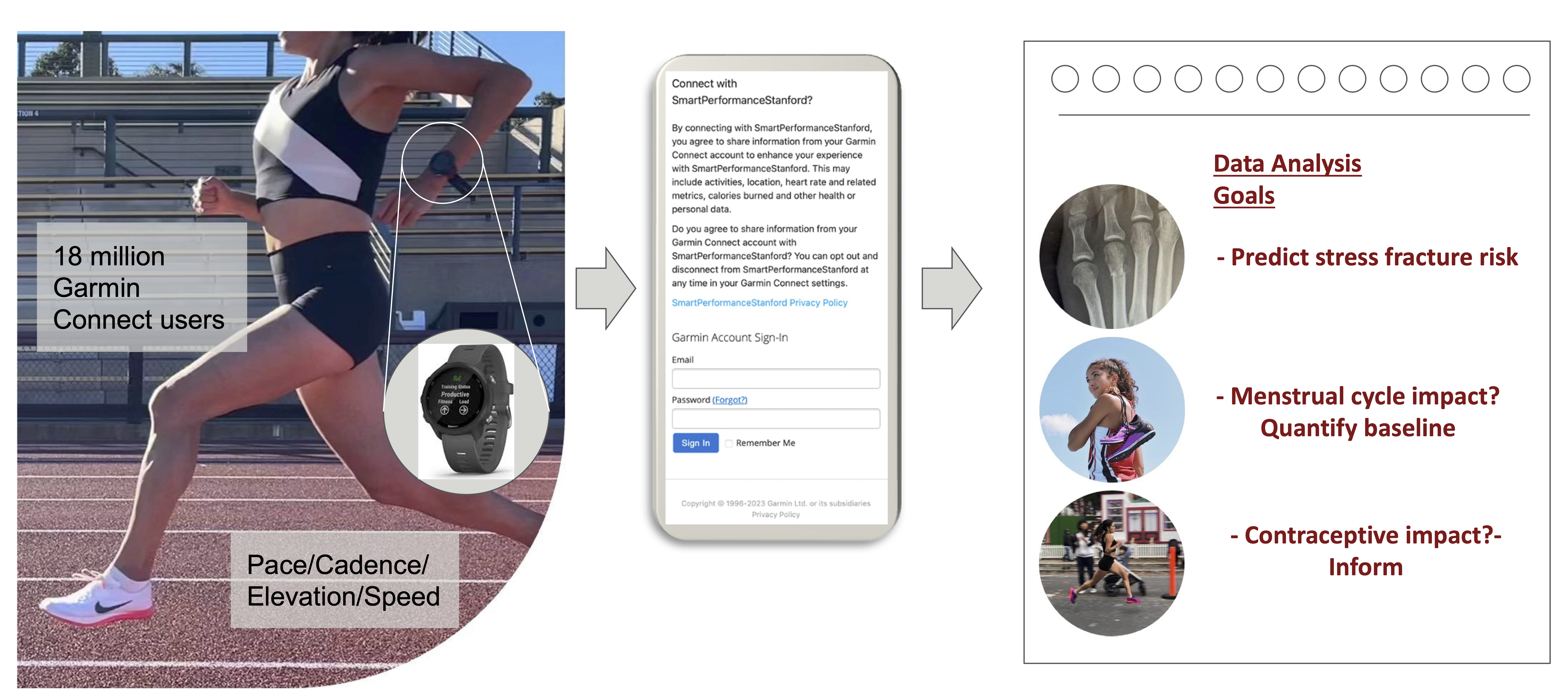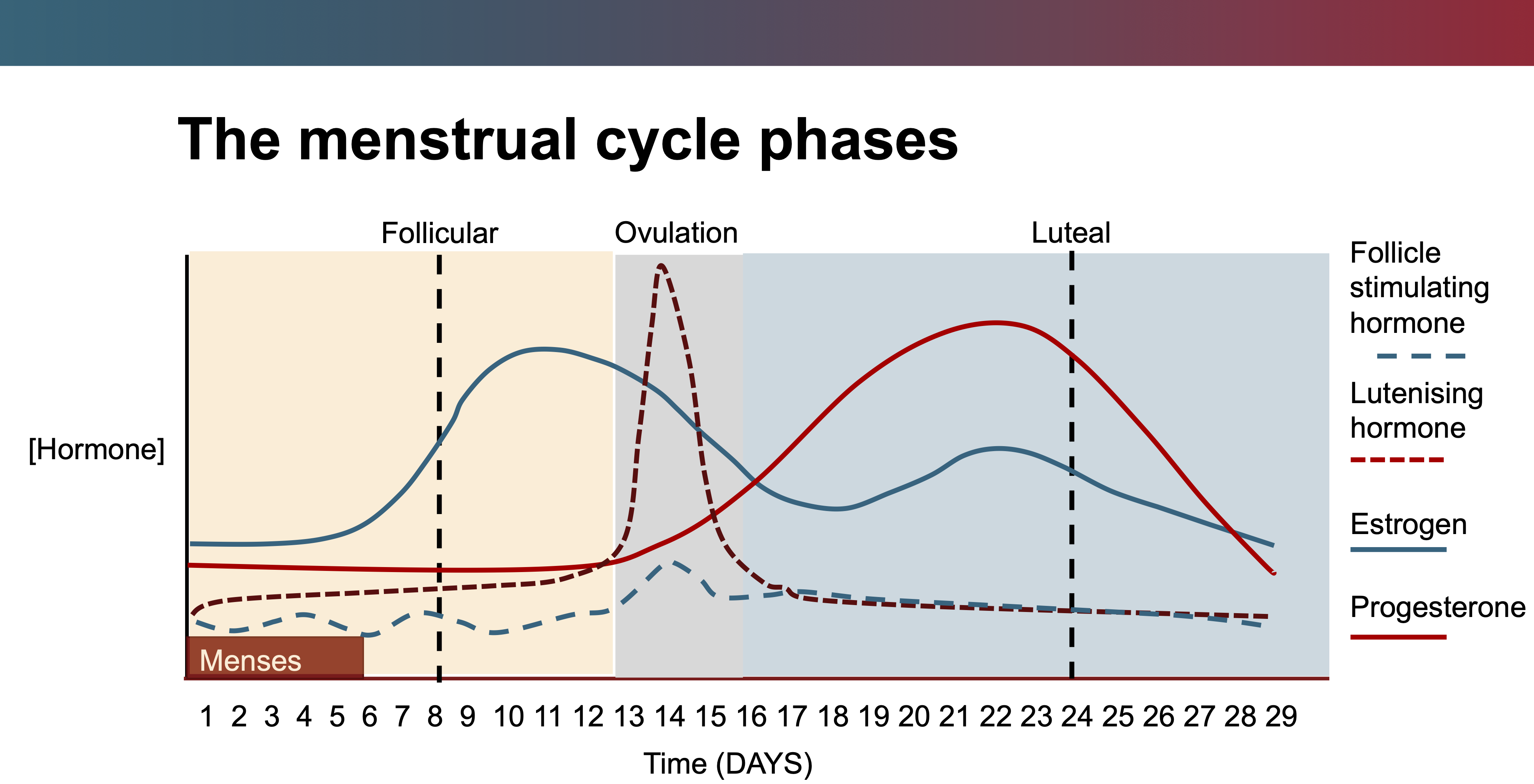Overview
Our goal as researchers at the Wu Tsai Human Performance Alliance at Stanford is to improve health and performance for all. We are doing this through two different studies that use data from garmin devices to understand different problems.
- Predicting bone injury risk In our bone injury risk study, we aim to track and predict stress fracture risk for runners. By collecting training data from smartwatches and linking it with self-reported injury rates, we are developing models to predict an athlete's risk for stress fractures.
- Quantifying impact of the menstrual cycle on performance Additionally, we are investigating the impact of the menstrual cycle on athletic performance by studying changes in heart rate across the menstrual cycle. Despite media coverage, there are research gaps in this area, and our aim is to better understand how the menstrual cycle affects performance.
Figure 1: We have built an online tool to enable athletes to easily share their training data with researchers. We aim to address several questions regarding stress fracture risk, the impact of the menstrual cycle and the impact of contraceptive use on performance.

1. Predicting bone risk injury
Motivation & Impact
Stress fractures occur with high incidence in endurance athletes and military recruits when mechanical load exceeds the bones capability. They are also a common occurrence in recreational runners. The threshold at which this occurs can be influenced by multiple factors including biomechanics, training load, bone health, and recovery capability of the subject.
Figure 2: Stress fractures occur when bone loading exceeds the bone's capability to recover and is influenced by multiple factors

We will use training data including pace, terrain type, elevation gain, and other metrics collected from smartwatches worn by endurance athletes to identify trends that lead to increased stress fracture likelihood. We will also use physiological models of recovery and fitness to better predict an individual's injury risk.
Ultimately, we would like to provide athletes with a tool that can use the athletes' training data to develop personalized models to provide feedback on stress fracture risk based on their training. This tool would enable coaches and athletes to objectively track and receive alerts regarding their risk, prompting them to exercise caution and potentially focus on factors like sleep.
Aims & Hypotheses
We aim to develop personalized injury risk models and compare them with traditional injury models that estimate fitness and fatigue from heart rate.
Methods
We are collecting 2.5 years of smartwatch-recorded training data from semi-elite and recreational running groups. Runners will also share bone stress injury history so we can try to understand what kinds of training factors and loads they experienced preceding the injury. We will use a number of different biomechanical, physiological, and statistical modeling techniques to build personalized injury prediction models. We will then evaluate our models against existing models that rely on heart rate parameters alone.
2. Quantifying impact of the menstrual cycle on performance
Motivation
The impact of the menstrual cycle on female athletes' performance and training outcomes is still not well understood, despite the perception among athletes across various sports that the physical changes accompanying the menstrual cycle can hinder their performance. Research on the underlying factors driving these effects remains unclear.
Aims & Hypotheses
Our goal is to use training and heart rate data from smartwatches worn by female endurance runners to assess whether there are changes in heart rate for a given pace across the menstrual cycle without requiring athletes to alter their routine and attend a laboratory space. Specifically, we aim to a) analyze heart rate for a given pace with regularly menstruating female athletes using no or non-hormonal contraception b) assess inter subject variation and compared perceived effects to actual effects c) carry out a comparative analysis with users of hormonal contraception and d) assess injury risk throughout the cycle.
Methods
Female participants are asked to report regular menstrual cycles and smartwatch training data for 6 months. Each month participants are sent a new link to continue to provide access to training data and complete menstrual and injury questionnaires for the prior month. We will use a number of different biomechanical, physiological, and statistical modeling techniques to investigate aims a-d above.
Figure 3: Hormones related to the menstrual cycle when a woman is not using hormonal contraception and specific timepoints within the cycle (follicular phase, ovulation and the luteal phase). We aim to quantify where the different phase can impact endurance performance.
